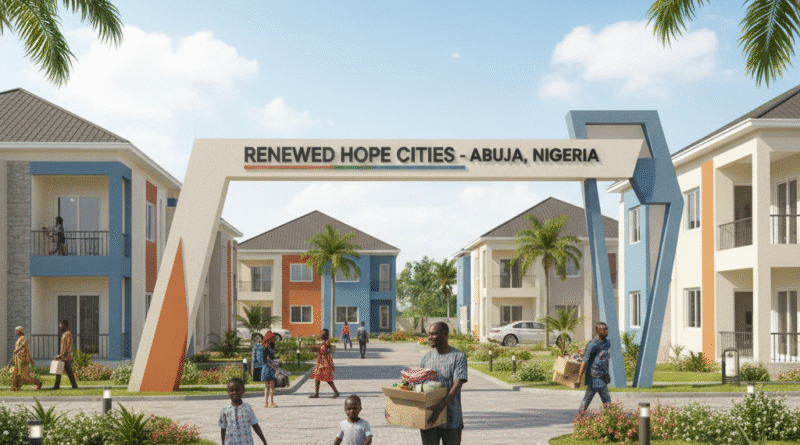Renewed Hope Cities: Can 2,000 New Homes Ease Nigeria’s Housing Burden?
Under a bright Abuja sky, the Federal Government recently unveiled 2,000 homes as part of the Renewed Hope Cities in Nigeria project. It was meant to be a moment of optimism, a signal that the state is serious about addressing the country’s housing deficit, which experts estimate at over 28 million units.
Yet for many families in need, the question lingers: will these new affordable housing projects in Nigeria trickle down to those most desperate for shelter, or will they remain symbols of promise locked away behind bureaucratic walls?
A City of Promise, A Deficit of Shelter
The commissioning ceremony, complete with speeches and fanfare, showcased rows of freshly built apartments and bungalows in the heart of the capital. Officials praised the initiative, describing it as a cornerstone of the administration’s housing policy. Each home, they said, represented more than bricks and mortar—it was a chance to restore dignity to Nigerians priced out of the urban dream.
But the reality outside the gates tells a harsher story. In Abuja’s suburbs, rents for modest flats continue to climb, swallowing up the salaries of civil servants and traders alike. A two-bedroom apartment that cost ₦600,000 a year now hovers near ₦1.2 million. For many, ownership remains an illusion. Even as the Federal Government housing scheme in Nigeria takes shape, access remains the sharpest dividing line.
Beyond Bricks: Implications for Real Estate, Economy, and the Ordinary Nigerian
The implications of these new government housing projects in Nigeria ripple far beyond the polished images of freshly painted walls. For the real estate market, large-scale public housing alters competition. Developers watch closely, knowing that if government-backed schemes offer lower prices, private projects must adjust. Yet doubts linger about sustainability: will these homes be maintained, or will they fall into disrepair like past estates that became ghost towns?
The environmental story is equally important. Abuja’s expansion has come at the cost of green belts and natural drainage. Each new estate raises questions of planning: are we building with flood resilience, energy efficiency, and climate realities in mind, or are we repeating the mistakes of hasty urbanisation?
For the economy, housing is both a challenge and an opportunity. Every unit constructed creates jobs for masons, carpenters, and suppliers. But the gap between supply and demand is still overwhelming. Two thousand homes barely scratch the surface of a 28-million-unit shortfall. Without consistent policy and financing reform, the deficit may continue to grow faster than the government can build.
And for the ordinary Nigerian, the central concern remains affordability. If mortgage access is limited and prices remain beyond reach, these houses risk standing as empty monuments rather than lived-in homes. For the trader in Nyanya or the schoolteacher in Gwagwalada, what matters is not the ribbon-cutting but the ability to hold a key that opens their own front door.
Related News
Nigeria REITs Tax Reform: Can Policy Unlock Billions for Real Estate
Nigeria’s Real Estate at a Crossroads: Why Ethics Could Make or Break the Market
Niger Flooding Real Estate Crisis: Lives Lost, Futures Drowned
The Test of Renewed Hope
The unveiling of 2,000 units is a statement of intent, but it is also a test. Will this be the beginning of a sustained housing revolution, or will it fade into the archive of government promises? Renewed Hope must mean more than ceremonies; it must translate into policies that bridge the gap between dream and reality, between blueprint and occupancy.
Conclusion
Nigeria’s housing crisis is not just a statistic. It is a lived experience for millions who rise each day to face rising rents, overcrowded apartments, and the anxiety of insecure shelter. Until homes become accessible to the very people they are meant to serve, the nation’s housing story will remain unfinished.

